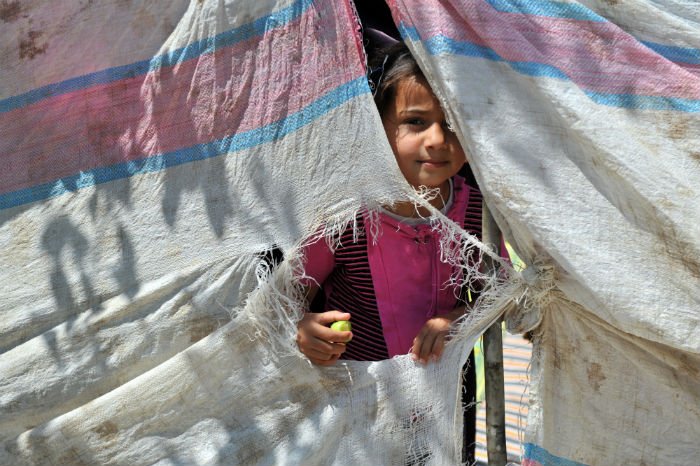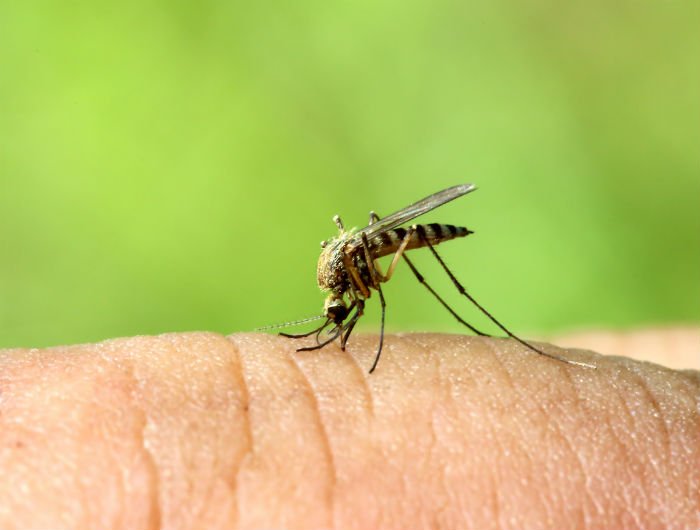Since the Industrial Revolution, mass quantities of carbon dioxide have been pumped into the air. Coal and oil have burned bountifully in countries around the world, releasing billowing clouds of greenhouse gases into the atmosphere. At the same time, rapid deforestation has limited the earth’s natural ability to absorb excess carbon dioxide from the sky. The result? Record-breaking temperature increases.
I hate to be all “doom and gloom” on your hump day, but this is scary stuff. If the world keeps emitting carbon pollution at current levels, there could be some devastating consequences.
By the end of the century, the world could have a new look, and trust me, it’s not a good one.
Check out how climate change could be behind the world’s worst makeover.
Hot times in the Middle East
Temperatures in parts of the Middle East could become so hot that even the fittest humans won’t be able to survive outside for more than a few hours.
The Middle East could be too hot for humans by 2100: https://t.co/FxFL1OWwkj
— Co.Exist (@FastCoExist) November 1, 2015No mo’ snow in Sweden
Swedish skiers may need to take up a new sport. By 2100, the length of the snowy season could shrink by 40-80 days.
The length of the snowy season is expected to shrink by 40-80 days by the end of the century, depending on what... https://t.co/rzn7Eb4iDD
— ClimateState (@climatestate) November 2, 2015Waikiki: an underwater paradise
Sunbathing on this beautiful Hawaiian beach could soon be considered a legend. One study projects that a 1-foot to 3-foot rise in sea level would put most of Waikiki’s white sand underwater.
Much of Waikiki might be underwater in the next century. Climate change may ruin Hawaii. #SaveYourVacationhttp://t.co/iqkrMgWXLJ
— Upwell (@upwell) August 29, 2014When you’re hot, you’re poor
Apparently, an increase in income inequality and global warming go hand in hand. Since hotter countries tend to be poorer, climate change could reduce average income in the poorest 40 percent of countries by 75 percent in 2100, while the richest 20 percent may experience slight gains.
Study finds #climatechange will reshape #global economy https://t.co/nIEdLKY8jlpic.twitter.com/DtWnrSqUPp
— UC Berkeley (@UCBerkeley) October 28, 2015A world on the move
By 2050, 200 million people might be forced to move due to environmental changes. That’s more than 20 times (!) the number of Syrians who have been displaced due to conflict in the country. If countries are struggling to support current refugees and migrants, imagine how much stress countries will be under by the end of the century.

Rise of the insects
Bust out that bug spray because disease-carrying mosquitoes could come to a city near you!
Just this year, Taiwan and India both experienced unusually severe outbreaks of dengue fever, which spreads via disease-carrying mosquitoes. Experts say that the outbreaks were linked to different weather patterns (e.g. warmer temperatures and longer monsoon seasons).
This trend doesn’t bode well for a warmer, wetter planet. Longer summers and more rainfall could help those nasty little buggers buzz around in more areas than usual.

Bye bye, birdie
Lions, tigers, and bears--oh my! You might be scared of them, but the threat they pose to you is nothing compared to threat climate change poses to them. Half of all plants and a third of animals could lose more than 50% of their current habitats by 2080. And tens of thousands of species are already becoming extinct.
RT @planetearthnews: @NERCscience in news: @guardianeco: One-third of animal species will be hit by #climatechangehttp://t.co/GN1hNKHHhp
— NERC (@NERCscience) May 16, 2013An underwater disappearing act
Brace yourselves for the ultimate magic trick. By 2050, all reefs could be at risk of disappearing. How? As the ocean becomes more acidic, new coral won’t be able to grow and existing coral will dissolve.
Ta da!
Coral reef cover has declined by 50% in the last 30 yrs and reefs could disappear by as early as 2050 #6thextinctionhttp://t.co/igyN6lNWdB
— Karan Dhanwani (@karandhanwani) September 26, 2015Farewell, farmland
It goes without saying that floods, droughts, and fires have the ability to destroy farmland. No farmland? No food.
One report shows that by 2050, climate impacts on crop yields could increase the number of malnourished children by around 11 million in Asia, 10 million in Africa, and 1.4 million in Latin America.

In December, countries will come together in Paris to negotiate an international climate change deal. What comes out of this meeting will be (literally) world-changing.
According to a recent United Nations synthesis of the more than 140 national climate pledges already submitted to the U.N., the world is not making bold enough commitments. Earth is currently on track for 2.7°C of warming by 2100. A rise of 2 °C is considered the cut-off for irreversible climate change.
Countries must do more to cut carbon emissions and save the world from a disastrous future. While I'll be too old to flaunt my bikini body on Waikiki Beach in 2100, the next several generations deserve to get the chance.
Do what you can and call on David Cameron to protect the fragile biodiversity of the world's oceans in TAKE ACTION NOW.